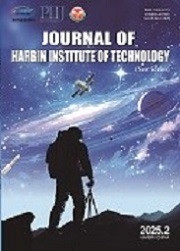|
| Abstract: |
| The error caused by irreversible demagnetization damages the accurate velocity tracking of an in-wheel motor in a mobile robot. A current feedforward vector control system based on ESO is proposed to compensate it for the demagnetization motor. A demagnetization mathematical model is established to describe a permanent magnet synchronous motor, which took the change of permanent magnet flux linkage parameters as a factor to count the demagnetization error in velocity tracking. The uncertain disturbance estimation model of the control system is built based on ESO, which eliminates the system error by the feedforward current compensation. It is compared with the vector control method in terms of control accuracy. The simulation results show that the current feedforward vector control method based on ESO reduces the velocity tracking error greatly in conditions of motor demagnetization less than 30%. It is effective to improve the operation accuracy of the mobile robot. |
| Key words: mobile robot velocity tracking disturbance estimation vector control |
| DOI:10.11916/j.issn.1005-9113.2023048 |
| Clc Number:TP249 |
| Fund: |
|
| Descriptions in Chinese: |
| 轮毂电机的退磁分析与速度跟踪控制 李海虹,陈俊杰,刘志奇 (太原科技大学 机械工程学院,山西 太原 030024) 摘要:移动机器人采用轮毂电机驱动时,存在因不可逆退磁现象造成的电机转速跟踪误差。为减少该误差对运行精度的影响,提出基于ESO的电流前馈矢量控制系统,对退磁电机进行补偿控制。建立永磁同步电机数学模型,将永磁体磁链参数的变化计入退磁量对电机速度跟踪精度的影响;采用ESO建立控制系统的全局扰动估计模型,结合前馈电流准确补偿系统误差,并与仅用矢量控制方法进行控制精度对比。仿真结果表明,本研究提出的基于ESO的电流前馈矢量控制方法可在退磁量小于等于30%的范围内将电机转速跟踪误差大幅降低,提高了移动机器人的运行精度。 关键词:移动机器人;速度跟踪;扰动估计;矢量控制 中图分类号:TP249 文献标识码:A |




